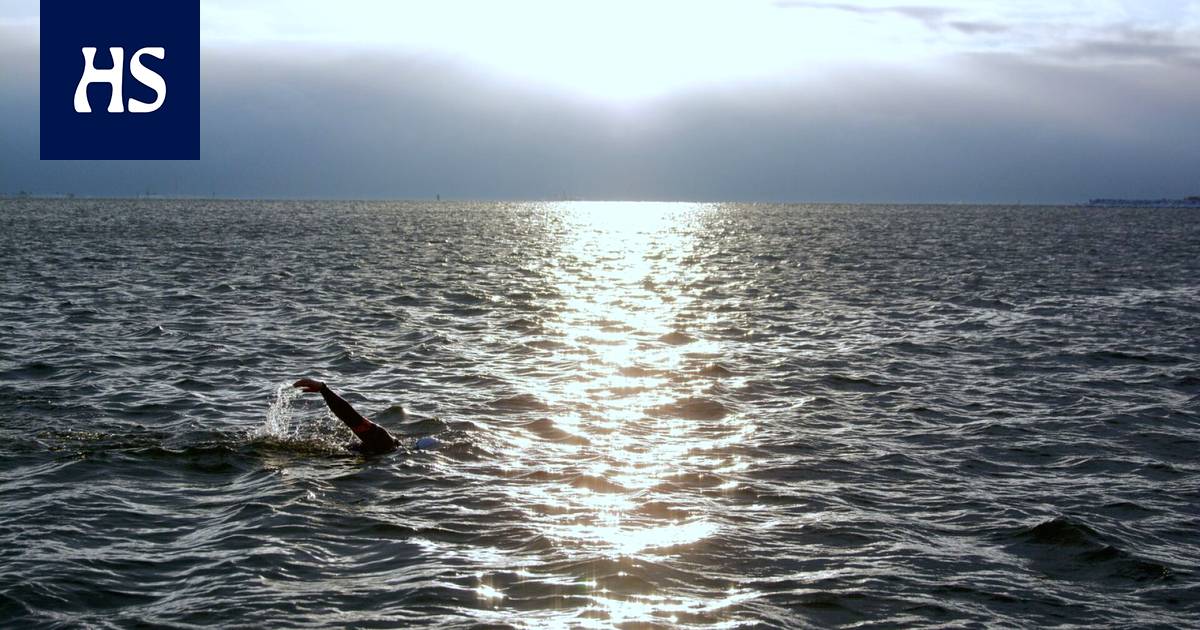Gustav Kvikant trained up to six hours a day to be able to swim for more than a month in the Baltic Sea.
Gustav Kvikant answers the phone at sea, somewhere towards Porkkalanselkä. He is just getting ready for the day’s swimming performance.
Kvikant, who started the almost 500-kilometer job at the beginning of June, is on the winning side. He will arrive in Helsinki on Monday evening.
“This has been my way of doing something concrete for the sake of the Baltic Sea. I want to use my physical resources for an important cause,” says Kvikant.
Thought Swimming from Sweden to Finland started smoking a few years ago. Kvikanti found out that no one has swum from Stockholm to Helsinki before. A physiotherapist concerned about the state of the Baltic Sea thought that a trip would be a good way to draw attention to the state of the sea.
The 24-year-old from Helsinki had previously been enthusiastic about various challenges and trained for a triathlon.
“I thought that now my fitness is starting to be at a sufficient level and my life situation is such that it is possible to implement this project,” says Kvikant.
At first, the idea of a swimming project lasting more than a month seemed impossible, according to Kvikant, but with practice, his confidence grew. In January, Kvikant left strength training and triathlon training in his training program and focused solely on swimming.
“I swim three to six hours every day in the Mäkelänrinte or Töölö swimming halls,” Kvikant said. He switched to natural waters in May.
The three-member team makes sure that Kvikant drinks, eats and rests enough. Photo: Jesper Petterson
Traveling will be reported The Baltic Swim 2022to the project’s social media accounts. Kvikant swims an average of 12 kilometers a day.
“We arrive at the Market Square at six in the evening. At least friends and family are against it,” says Kvikant.
He has not crossed the Baltic Sea alone. Kvikant hired a three-person team to follow Kvikant’s performance on a sailboat next to him.
The crew takes care of Kvikant’s drink and food breaks. They are needed frequently, because Kvikant consumes around 6,000 to 7,000 calories every day.
Swimming Kvikant uses a five millimeter thick wet suit, hood, swimming cap and thermal socks. Kvikant gave up his gloves a while ago. In addition to that, of course, swimming goggles, which, according to Kvikant, are not exactly fun.
“It doesn’t matter where we’ve been, the visibility has been really bad. The older generation says that the change has been significant.”
Where the seabed has been visible, according to Kvikant, it has looked dead.
The problems in the Baltic Sea also affected the schedule of Kvikant’s swimming project: because of the blue-green algae, the swimming had to start immediately in the first days of June, in order to get there before the water turns to pea mud. Kvikant had come across such a one in front of Hanko.
By swimming, Kvikant raises money through its partner, the John Nurminen Foundation, which focuses on the protection of the Baltic Sea.
“Twenty tons seems like a good goal,” says Kvikant.
According to Kvikant, the most important thing would be to get people to talk about the bad and deteriorating condition of the Baltic Sea.
Bathing can be quite monotonous, especially if you can’t see ahead. What does Kvikant think when he swims alone in the sea for many hours a day?
“Everything and nothing. Sometimes I focus on technology, sometimes I think about life, this project, my friends. And what I do when I get home.”
So what does Kvikant plan to do once the crossing of the Baltic Sea is over?
“Considering that I’ve thought about this quite a lot, I still don’t know the answer. But at least I won’t be swimming for a while!”
#Environment #man #Helsinki #time #unprecedented #swimming #performance #Baltic #Sea








